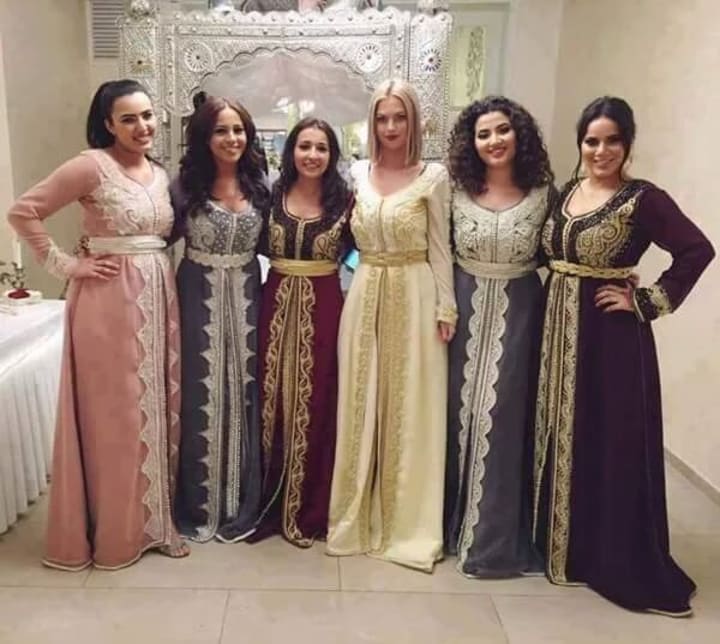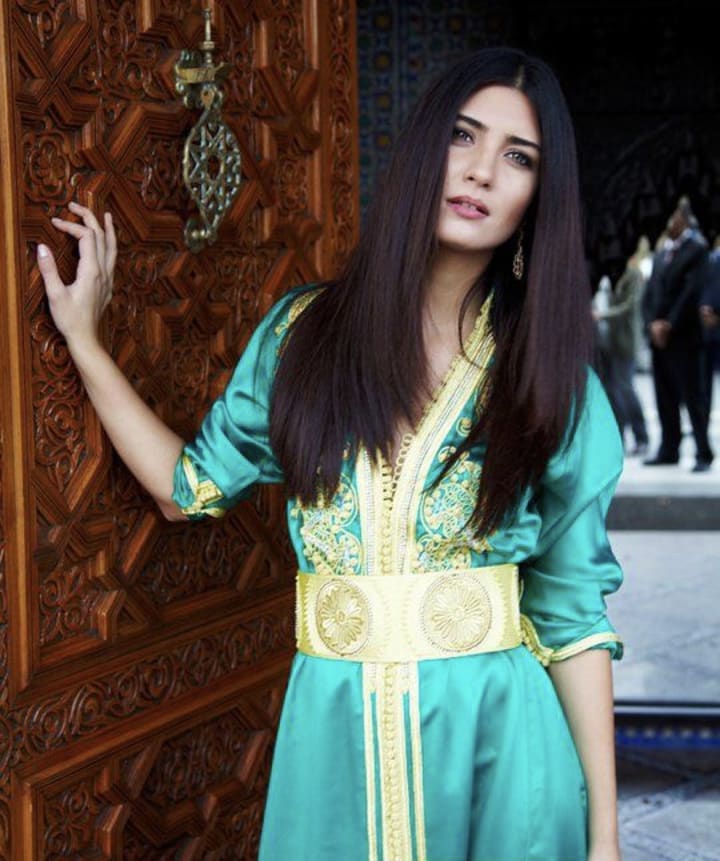
Pictured here: Turkish actress, Tuba Büyüküstün.

Worn globally, the kaftan has possessed fashion for quite a while, and has also been given the light as a cultural influence. Meanwhile, more locally in Morocco, it has an aspect of importance to it. The dress is a best friend to many Moroccan women and is worn as a basic outfit and a haute-couture garment, taking material into consideration.
The first debut of the Moroccan kaftan was somewhere in the 16th century. The kaftan has been a favourite choice of dress in the Middle East and Iran before the debut. In the ninth century, the dress was adopted as attire by women in Andalusia (modern day Spain), the period in which it was ruled by a Moroccan Berber.
Shortly after the Spanish takeover, which led to either a conversion to Christianity or expelling Muslims and Jews from the land, many who lived in Spain left to Morocco and took with them their traditional style of dressing. Materials were gathered to start introducing the kaftans as a fashion statement; silk and fine fabric are of importance.

Moroccan kaftans are a true symbol of the different cultural aspects and cultural tradition influences. Several pieces of the garment is made in the local towns today. It is a common view to see women preparing the garment fabric, collecting the necessary colorful beads and threads, and gathering everything needed to make sure that the final product is a masterpiece. Haberdashery shops are always busy, as the belt of the kaftan is an intricate piece of the dress. This is the place that is needed to assemble all accessories to make a picture perfect look.

There exists a wide array of cotton kaftans that many wear throughout the town. You will see the cotton kaftans take over in summer trends. It displays a blend of colors and more colourful in nature than haute couture dresses as it features the history of Moroccan beauty in it being vivid.
Many foreigners confuse the kaftan with a djellaba and takchita. A djellaba is a unisex garment in Morocco. The difference exists in the hood. A djelllaba has a hood, while a kaftan does not, and it is exclusive to women. A takchita is a belted dress that has two layers. It is a more elegant and sophisticated garment of attire.
A kaftan is easily distinguished by its long sleeves and airy material, normally paired with a pair of high heels to give effect to its length.
At the time of the Ottoman Empire, the kaftan was worn by women that reside in the Sultan’s palace. The pattern and embellishments of a kaftan is made for these women according to their rank and status.
The kaftan made its way to Morocco, but received a different perspective and importance in the Moroccan society. It is worn as an everyday dress and to upmarket occasions like weddings; it all depends on the choice and intricacy of its design. The Moroccan Kaftan is seen as a symbol that stands for women’s fine taste and style in traditional wear. It signifies beauty and femininity.
When Moroccan Princess Lalla Salma took the spotlight by wearing a stylishly elegant kaftan to the Royal wedding in England. She earned a spot of most stylish and best dressed guest as listed by Hello! Magazine.
Glam fashionistas often head to a top designer in haute couture, selecting the finest designs and embellishments to create that ultimate garment. The kaftan has been a luxury dress at many fashion shows and many celebrities have been spotted showing off in their elegant dress designs.






Comments
There are no comments for this story
Be the first to respond and start the conversation.